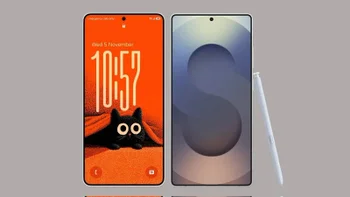What are macro cameras and how do you use them?

The macro camera is slowly making its way into the smartphone market. It is yet to arrive in the big leagues, but gets added to more and more mid-rangers and many budget devices.
The average smartphone user has become quite familiar with mobile photography as the increase in image quality and photo-centric apps like Instagram have nurtured a better understanding of photography basics.
However, there are many nuances to the topic, one of which is the macro genre. Macro falls in the more niche categories of photography and brings some very specific details with that status. Companies such as Huawei, Samsung, Xiaomi, and OnePlus have produced phones with macro cameras, marketing them as a beneficial addition for the user. But do you know what they are, how they function, and how to use them?
A macro camera is mainly dependent on the lens that it uses. Most of the work is done by that lens, and its main job is to magnify the subject. This usually includes getting really close, which means that the camera has to be capable of focusing at much shorter distances than others.
The magnification could, for example, be a 1:2 ratio which translates to a lens that can project an image of up to half the size of the subject. Similarly, a 5:1 ratio would mean you could get up to five times the size.
The camera achieves this result thanks to the concave curvature of the macro lens. A concave lens has its glass curved inwards. This concept is not new to humanity, and it has been used in dioptric and magnifying glasses for hundreds of years.
One of the biggest challenges in this type of photography is the shallow depth of field you have to deal with. Basically, the depth of field is how much of your image is in focus. Macro photographers deal with this issue by implementing a technique called focus stacking. Focus stacking is a way for the photographer to combine multiple shots with different areas of focus which results in a clear image.
There are a few tips to follow when getting into the macro world. First thing’s first, like with any photography genre, make sure you have a good amount of light. You need as much of it as possible. The more you have, the easier it will be for the camera to give you a better result.
On that note, the type of light is also significant. Diffused light is preferred since it evenly illuminates the subject. You can get it on overcast days, when light reflects from surfaces, or when it passes through some type of white cloth.
Another tip that could boost your macro game is finding a way to stabilize your device. This can be achieved by mounting it to a gimbal or tripod. These methods, however, can be rather expensive, so another option is to set a timer on the camera and place it on a surface. That way, you will avoid any shaking affecting your shot.
How popular a smartphone feature is boils down to its usefulness to the regular user. Generally, we don’t find ourselves in many situations where the implementation of such a camera would benefit our mobile needs.
However, there is something to be said about the potential of this technology. Currently, the low saturation of the feature leaves a gap in the market. If companies like Apple and Samsung decide to invest in macro, it could lead to creative implementations that would benefit users and consequently deliver profit to the manufacturer.
It’s worth noting that some phones like the Galaxy S21 Ultra and the OnePlus 9/9 Pro, have integrated macro modes in the camera app. While they don’t have macro cameras, Samsung and OnePlus have made use of the devices’ ultrawide ones. With the addition of software and AI, the macro shots come out with decent results.
At least for now though, macro cameras will remain a gimmicky part of the smartphone world. Maybe in the future, we will see some innovations that will make them more mainstream and useful in mobile photography.
The average smartphone user has become quite familiar with mobile photography as the increase in image quality and photo-centric apps like Instagram have nurtured a better understanding of photography basics.
What is a macro camera?
A macro camera is mainly dependent on the lens that it uses. Most of the work is done by that lens, and its main job is to magnify the subject. This usually includes getting really close, which means that the camera has to be capable of focusing at much shorter distances than others.
The camera achieves this result thanks to the concave curvature of the macro lens. A concave lens has its glass curved inwards. This concept is not new to humanity, and it has been used in dioptric and magnifying glasses for hundreds of years.
One of the biggest challenges in this type of photography is the shallow depth of field you have to deal with. Basically, the depth of field is how much of your image is in focus. Macro photographers deal with this issue by implementing a technique called focus stacking. Focus stacking is a way for the photographer to combine multiple shots with different areas of focus which results in a clear image.
How to use a macro camera
There are a few tips to follow when getting into the macro world. First thing’s first, like with any photography genre, make sure you have a good amount of light. You need as much of it as possible. The more you have, the easier it will be for the camera to give you a better result.
Another tip that could boost your macro game is finding a way to stabilize your device. This can be achieved by mounting it to a gimbal or tripod. These methods, however, can be rather expensive, so another option is to set a timer on the camera and place it on a surface. That way, you will avoid any shaking affecting your shot.
Are smartphone macro cameras viable?
How popular a smartphone feature is boils down to its usefulness to the regular user. Generally, we don’t find ourselves in many situations where the implementation of such a camera would benefit our mobile needs.
What’s more, most of the macro cameras we see in smartphones are rather underwhelming, and the quality just isn’t there. They are usually slapped on affordable models and some mid-range ones to raise the device’s appeal, following the trend of “More cameras = better phone.”
However, there is something to be said about the potential of this technology. Currently, the low saturation of the feature leaves a gap in the market. If companies like Apple and Samsung decide to invest in macro, it could lead to creative implementations that would benefit users and consequently deliver profit to the manufacturer.
It’s worth noting that some phones like the Galaxy S21 Ultra and the OnePlus 9/9 Pro, have integrated macro modes in the camera app. While they don’t have macro cameras, Samsung and OnePlus have made use of the devices’ ultrawide ones. With the addition of software and AI, the macro shots come out with decent results.
Follow us on Google News









![A new Android bug is making it impossible to install new apps. Are you affected? [UPDATE]](https://m-cdn.phonearena.com/images/article/176703-wide-two_350/A-new-Android-bug-is-making-it-impossible-to-install-new-apps.-Are-you-affected-UPDATE.webp)


Things that are NOT allowed:
To help keep our community safe and free from spam, we apply temporary limits to newly created accounts: